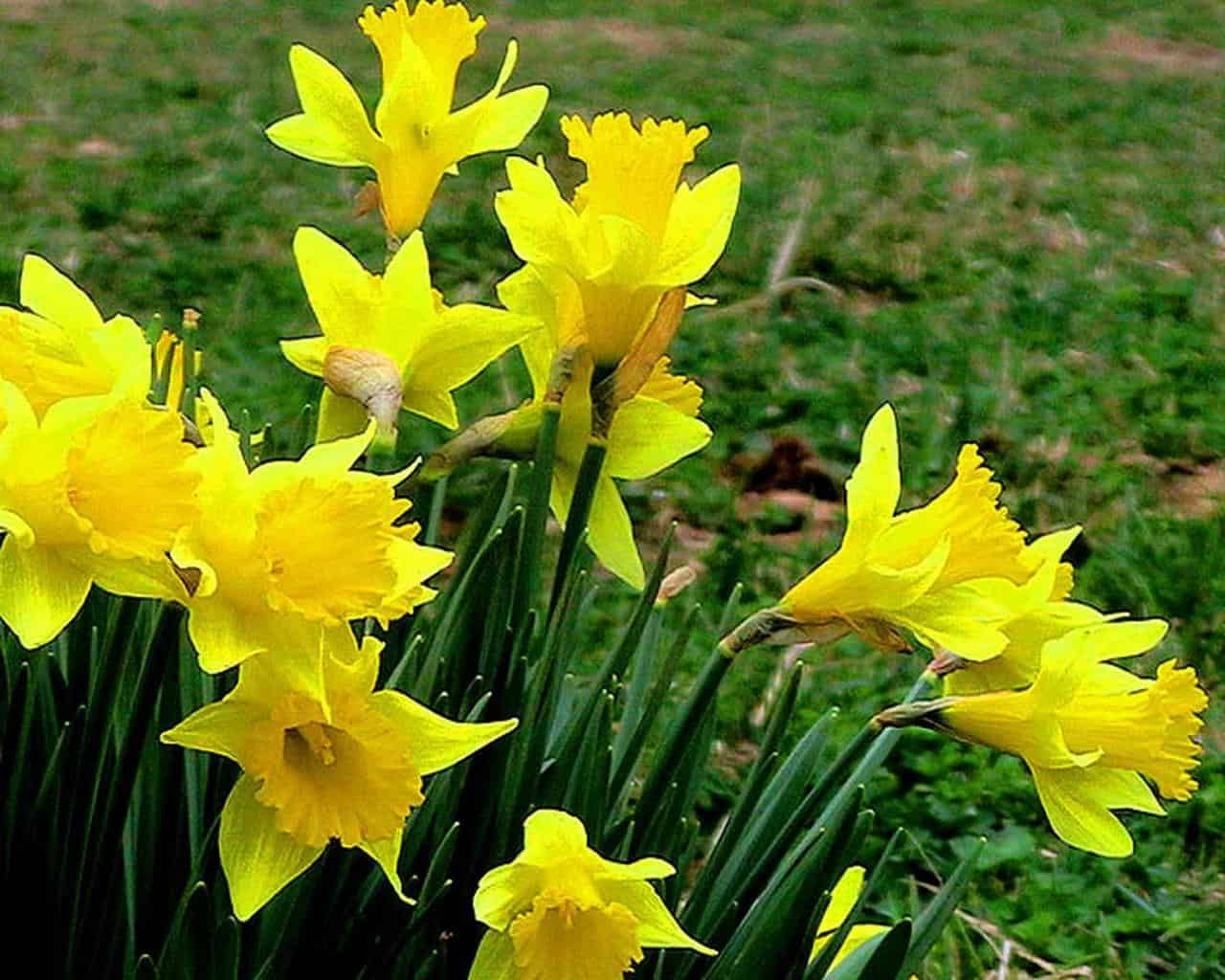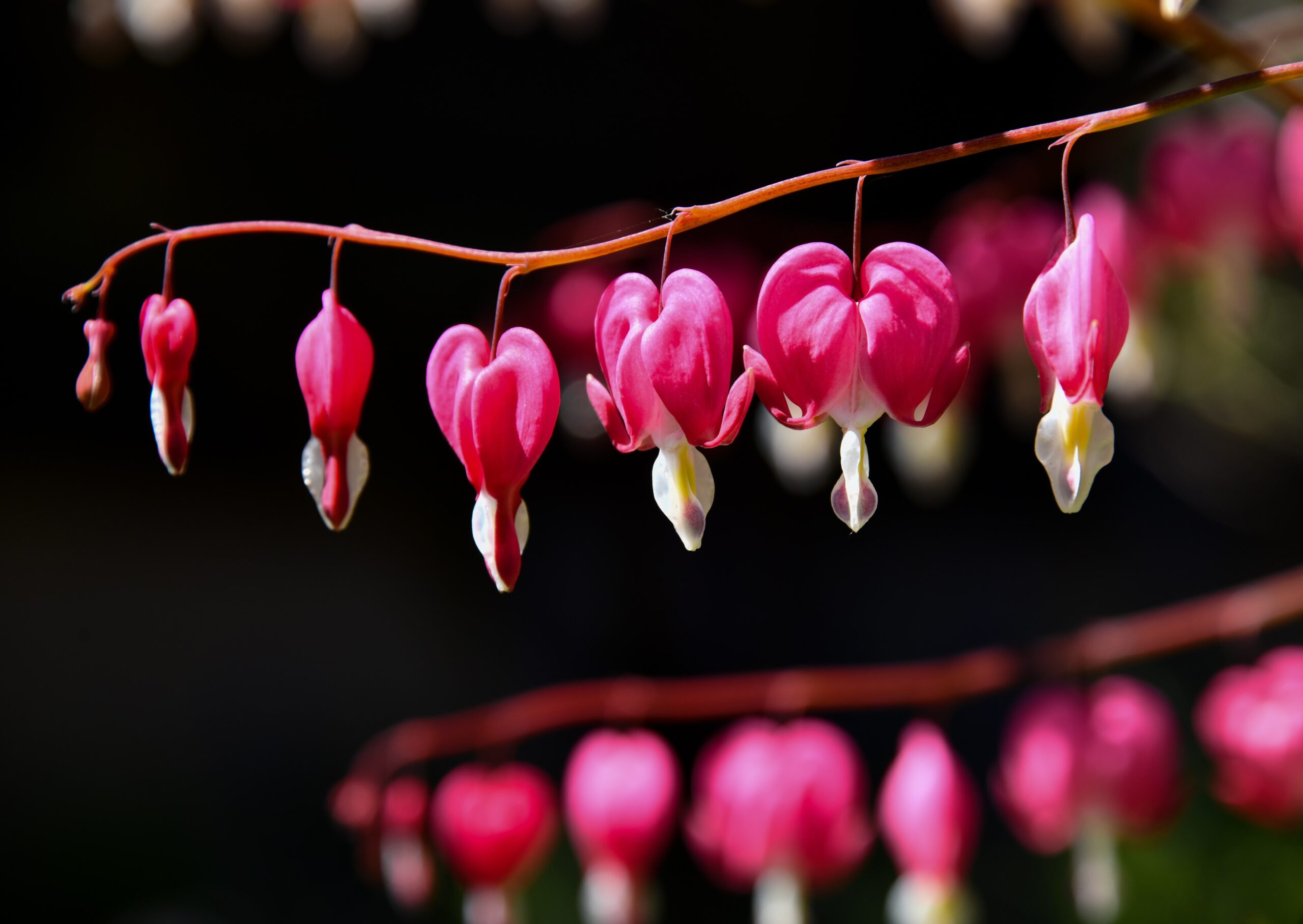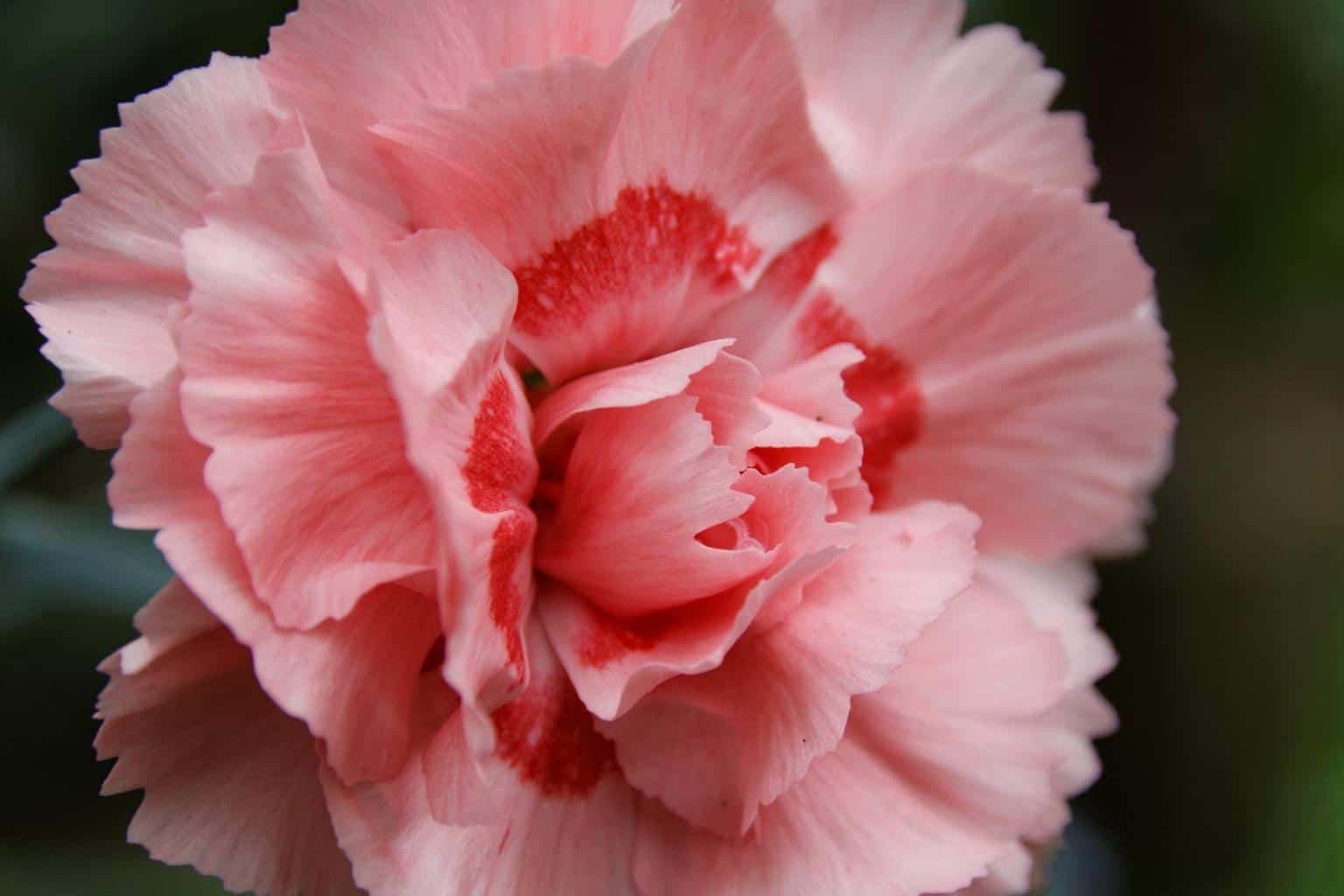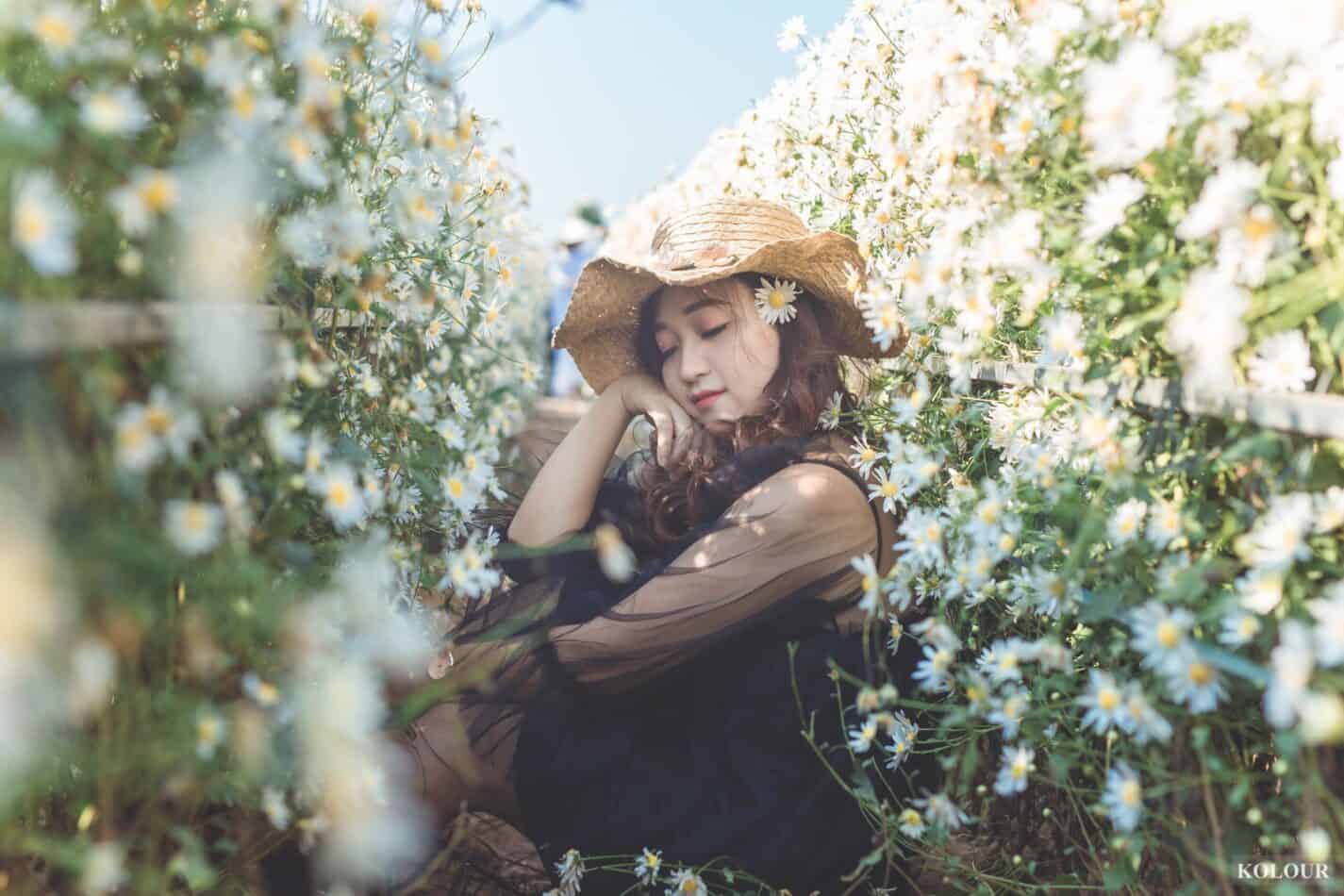Daffodils (or Narcissi) are one of my favorite flowers. I love their bright colors and delicate beauty. They bloom early in spring and last only briefly before fading away. “The History of Daffodils” explores the evolution of daffodils from their wild origins to their cultivation today and how daffodils have become an essential part of our culture and landscape.
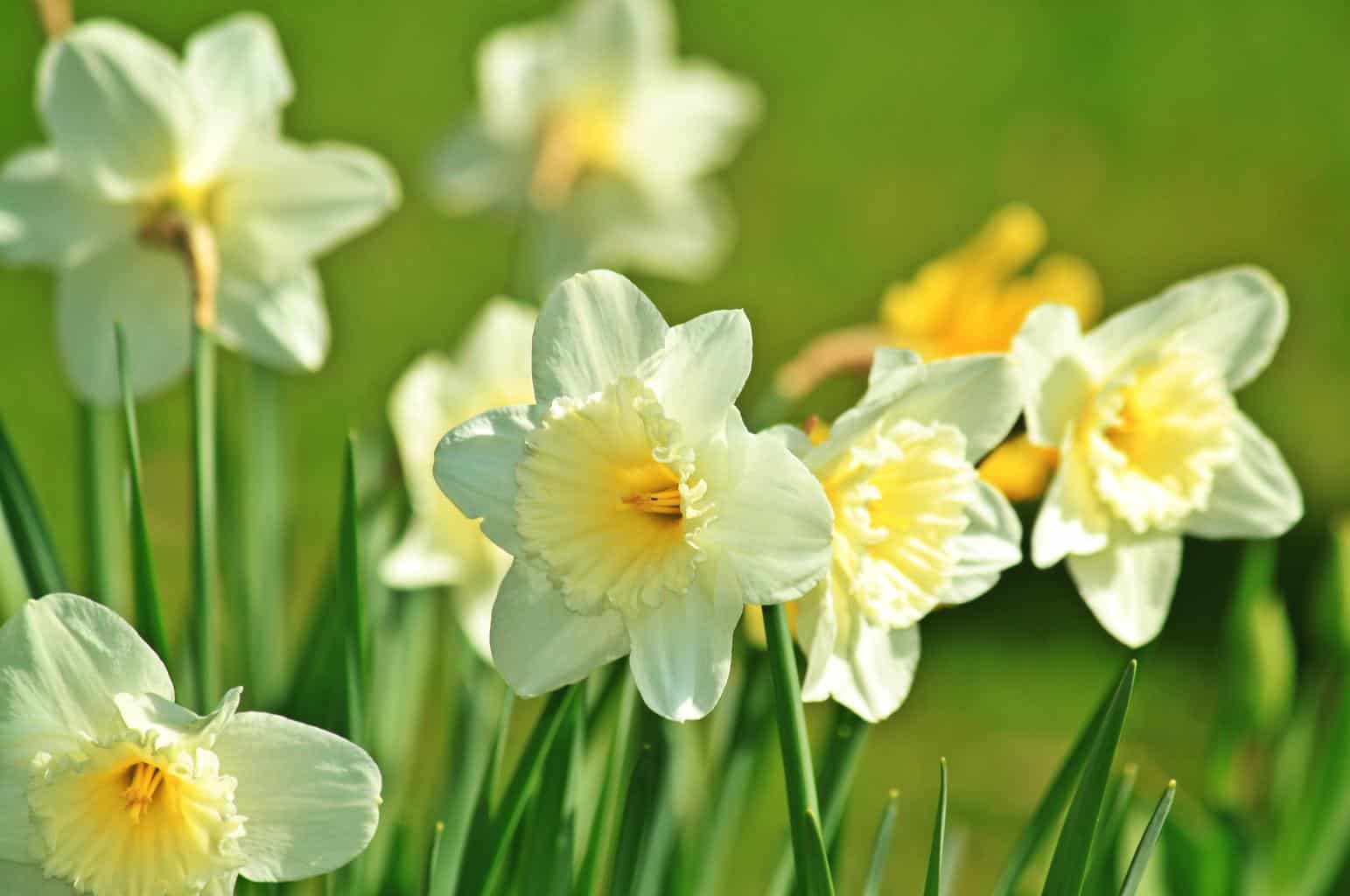
European heritage
Narcissi are beautiful flowers that grow everywhere. They are native to Europe and North Africa. They are famous for being able to bloom even when snow is on the ground. There are many different kinds of narcissi. Some people think that the sap of these flowers has medicinal properties. This is true. But the sap also contains crystals that irritate the skin.
Narcissus has been cultivated for thousands of years, but it wasn’t until the 19th century that people started classifying the many varieties of Narcissus. The first classification was based on the shape of the flower. Then came another classification based on color. And finally, a third classification was created based on the size of the petals.
Daffodils History
In 1822, Thomas Rivers published his book “A New Flora of England.” He described the Narcissus genus as having two types of flowers: the common daffodil (Narcissus pseudonarcissus) and the double daffodil (double Narcissus). These two species were later divided into three subspecies: N. pseudonarcissus subsp. pseudonarcissous, N. pseudonarcisussubsp. nivalis, and N. pseudonarciscus subsp. tazetta.
In 1824, John Lindley published his book “Genera Plantarum,” which included a description of the Narcissus genus. It also mentioned that the name Narcissus comes from the Greek word “narkissos,” meaning “dewy.” This is because the flowers of the Narcissus plant produce dew.
Today, the most commonly grown variety of daffodils is called the Easter lily or Narcissus bulbocodium. It’s a hybrid between the double Narcissus and the common daffodil.
Daffodils are now widely cultivated around the world. They can grow in fields and gardens throughout the United States.
How did we get here?
Europeans brought plants and seeds from their own countries when they arrived in America. Many of those plants became naturalized throughout the eastern half of the country. One such example is the daffodil.
When Europeans settled in North America in the 1600s, they planted daffodils along roadsides and riverbanks. By the 1800s, daffodils had spread across much of the eastern half of the United States.
By the mid-1800s, the popularity of daffodils began to increase. People began planting them in their backyards and gardens. Soon after, nurseries began selling bulbs of daffodils to gardeners.
As more and more people bought daffodils, growers began producing new hybrids. Hybridization techniques allowed breeders to create new varieties of daffodils that were larger than any other daffodil before them.
Today, you can find hundreds of different varieties of daffodil. Most of them have large, showy blooms that last for several weeks. You’ll usually see yellow, orange, red, pink, white, purple, blue, and lavender blossoms.
But not everyone likes daffodils. Some people don’t like how big they are. Others don’t like how tall they are. Still, others don’t like how long they stay in bloom.
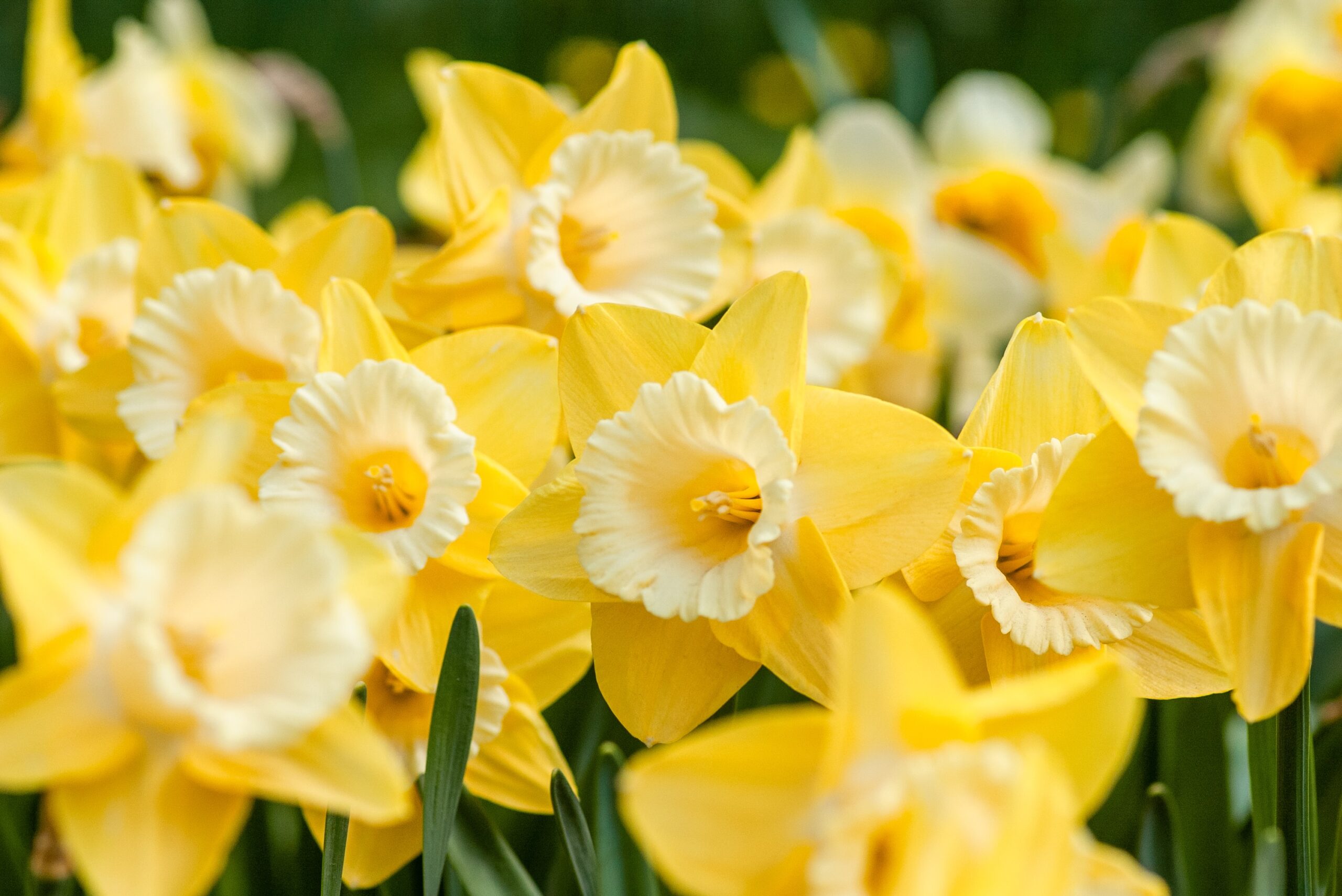
Daffodils Colors
You probably already know that the color of your daffodil depends on the type of flower you buy. But did you know there are different types of daffodils? There are five basic colors of daffodil: White, Yellow, Orange, Red, and Lavender.
White daffodils
White daffodils are the easiest to identify because they have no coloring. The flowers are completely white.
Yellow daffodils
Yellow daffodils come in many different shades. To grow a yellow daffodil, you’ll need to choose a variety that will produce a wide range of hues.
Orange daffodils
Orange daffodils are also known as “golden” or “orange.” These daffodils have bright orange petals.
Red daffodils
Red daffodils have deep reddish tones. The most common red daffodil is “pink”, but you some hues are deeper and intense so more similar to “red.”
Lavender daffodils
Lavender daffodils have a light lavender hue. They often have darker centers.
So now that we’ve covered all the basics, let’s get into the nitty-gritty details of each category of daffodil!
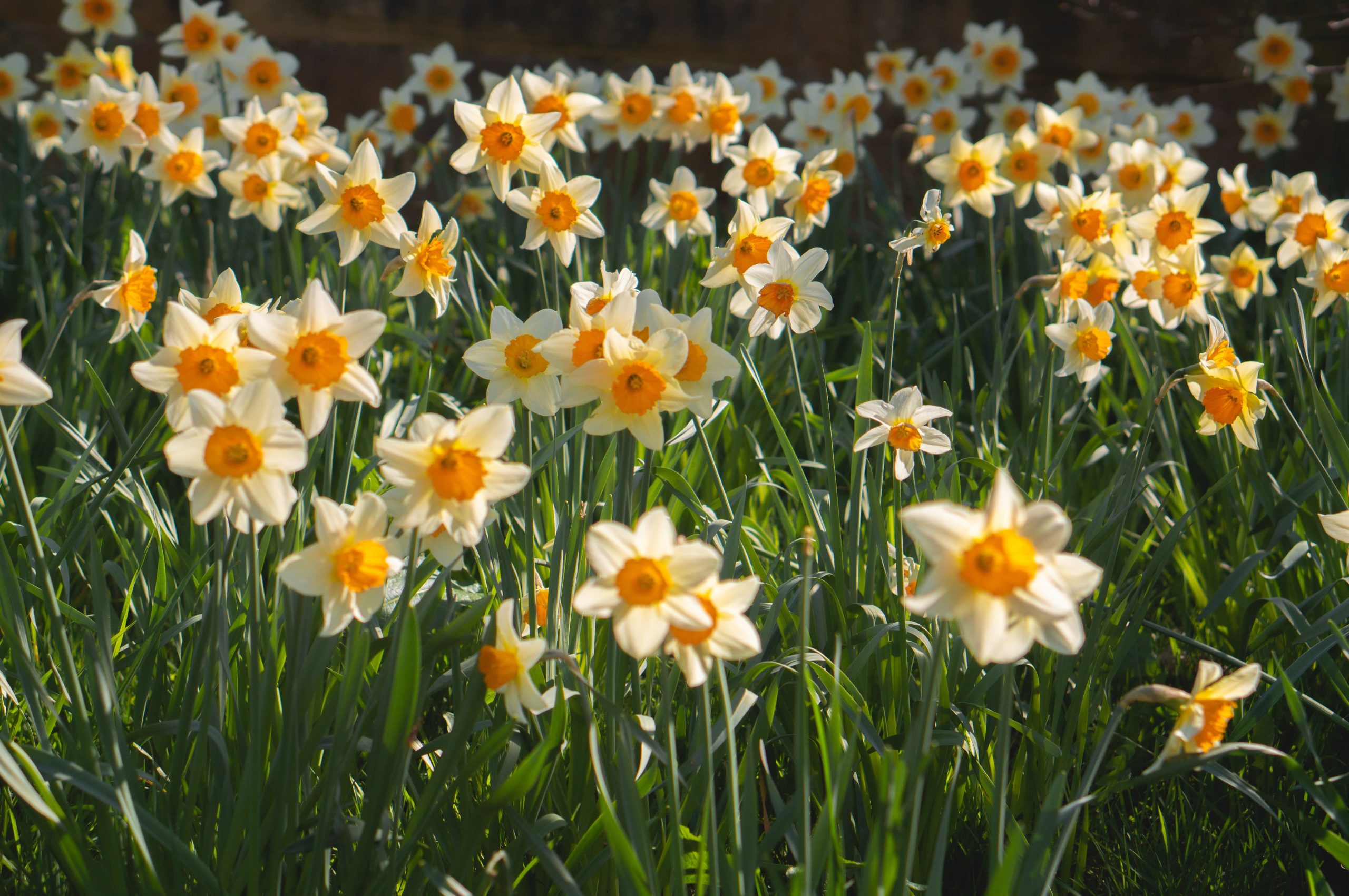
Daffodils Varieties
If you love daffodils, you need to learn about some of the different varieties out there. So let’s look at what you should know about the different kinds of daffodils out there today.
There are four main categories of daffodils: single, semi-double, double, and triple. Single daffodils have only one set of petals. Semi-double daffodils have two sets of petals. Double daffodils have three sets of petals. Triple daffodils have four sets of petals.
If you need a simple way to remember this, think of it like this: A single has one petal; a semi-double has two petals; a double has three petals, and a triple has four petals.
Single Daffodils
Single daffodils are just that – single. They have only one set of flowers per stem. This means that they have no petals.
These daffodils are very popular with gardeners because they’re so easy to care for. All you need to do is water them regularly. And since they don’t have any petals, they won’t wilt quickly.
They’re also pretty easy to grow. Just plant them in full sun and give them plenty of fertilizer.
Semi-Double Daffodils
These daffodils have both single and double flowers on the same stem. That’s why they’re sometimes referred to as “semi-doubles.”
Like their single cousins, these daffodils grow best in full sun. However, they require more attention than singles. You’ll need to fertilize them every few weeks.
And you can expect to see blooms throughout the entire season. Because they have both single and double blossoms, they tend to be larger than singles.
Double Daffodils
This is the category that includes the classic “daisy” daffodil. It has two sets of petals on the same stem.
As you might guess, these daffodil varieties are much harder to grow than singles and semi-doubles. They prefer cooler temperatures and lots of shade. So if you live somewhere where summers are hot and humid, then you should avoid growing double daffodils.
But if you are based in an area where winters are cold and dry, then double daffodils are perfect for you.
If you’re interested in growing double daffodils, make sure you plant them in well-drained soil. Also, keep in mind that they need regular watering during the summer months.
Triple Daffodils
Triple daffodils have three sets of petals on one stem. They look like daisies when they bloom.
Because triple daffodils are rare, it’s hard to find information about how to grow them. But if you do happen to find some good advice online, then you should try growing them.
Because they’re not as easy to grow as doubles, they’re usually reserved for experienced gardeners.
You can expect to see triple daffodils from late spring through early fall. But they’re not as reliable as other types of daffodils, so you may end up with many dead plants.
There are many different kinds of daffodils available at your local nursery. Try to pick a variety that grows well in your area. Look for types that are resistant to disease or pests.
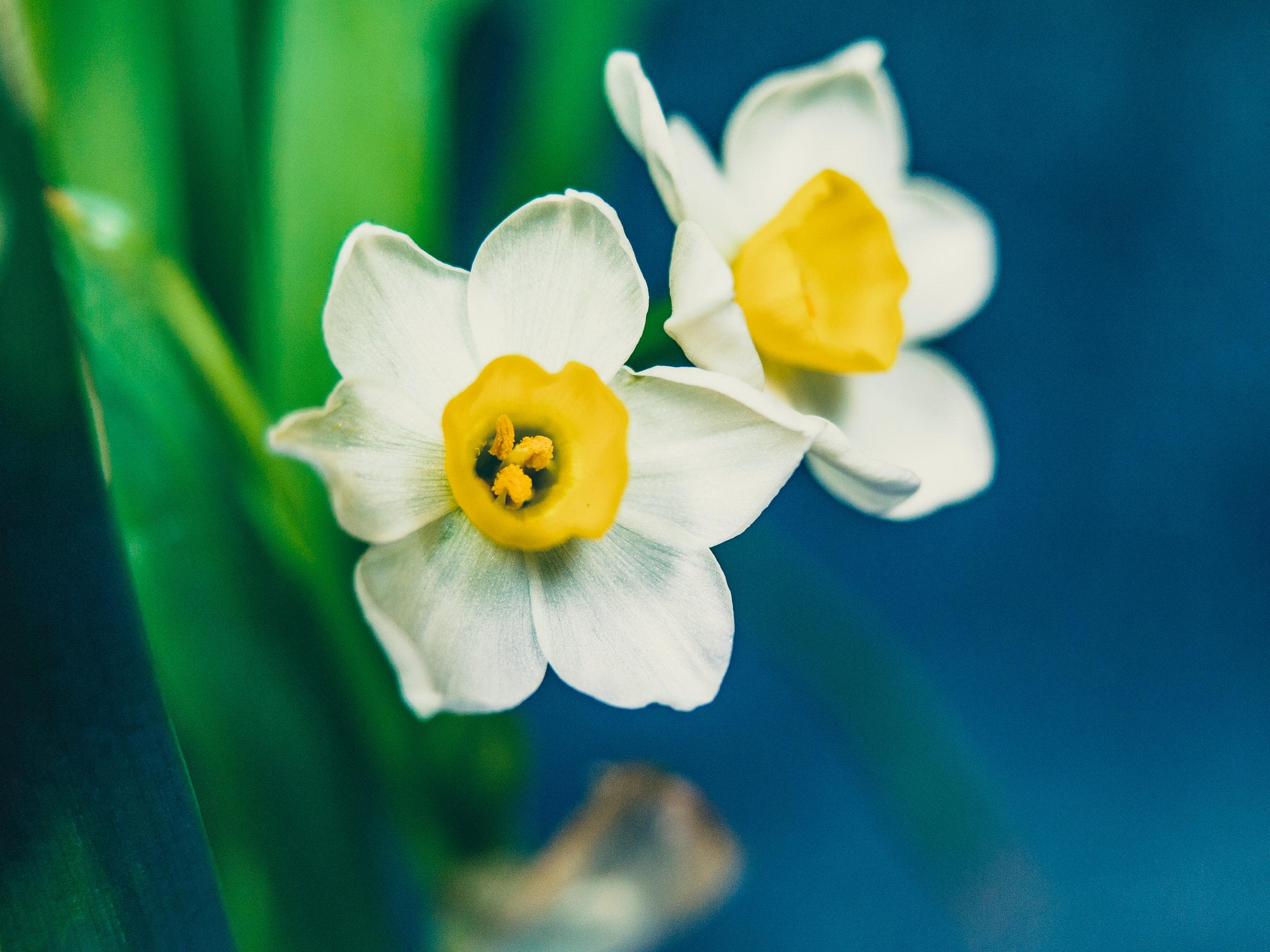
How to Grow Daffodils
Daffodils are a great addition to any garden. Whether you grow them yourself or decide on purchasing them at a store, there’s nothing better than seeing a beautiful bouquet of daffodils in your yard!
Daffodils are among my favorite flowers. I love the way they look, smell, and taste. I’m always excited to harvest fresh bulbs from our garden.
I’ve been growing daffodils for years now. I started with just a few bulbs planted around the house. As time went by, I added more and more bulbs until I had enough to fill an entire bed.
I enjoy watching the flowers come into bloom each year. And I love harvesting the bulbs and planting them in new beds.
Growing daffodils is simple. All you need is a sunny spot in your garden or balcony. The rest is all up to you.
Dig a hole
Begin to start digging a hole large enough to accommodate the bulb. Then plant the bulb deep enough so that its top half is covered by dirt.
Water thoroughly
Water thoroughly. This helps ensure healthy growth. You’ll also notice that the leaves begin to turn yellow. That means that the bulbs are ready to be harvested.
Cut off stems
When the foliage begins to die, cut off the stems close to the bulb’s base. Remove the outer layers of the bulb. Then wash the bulbs under cool water. Dry them thoroughly before storing them away. When ready to plant again, remove the bulb from storage and replant it. Make sure to repot it into a larger container. As long as you provide adequate light and moisture, daffodils will thrive in almost any location.
Daffodil’s Name Meaning
The name daffodil comes from the Latin word “dafodilum” meaning “god’s gift.” In ancient Greece, Narcissus was a handsome youth who loved himself too much. He fell madly in love with his own image reflected in a pool of water. When he tried to touch it, it vanished, and he fell into the water. As a consequence, he drowned. The meaning of the flower itself is not nefarious and it actually refer to new beginnings.
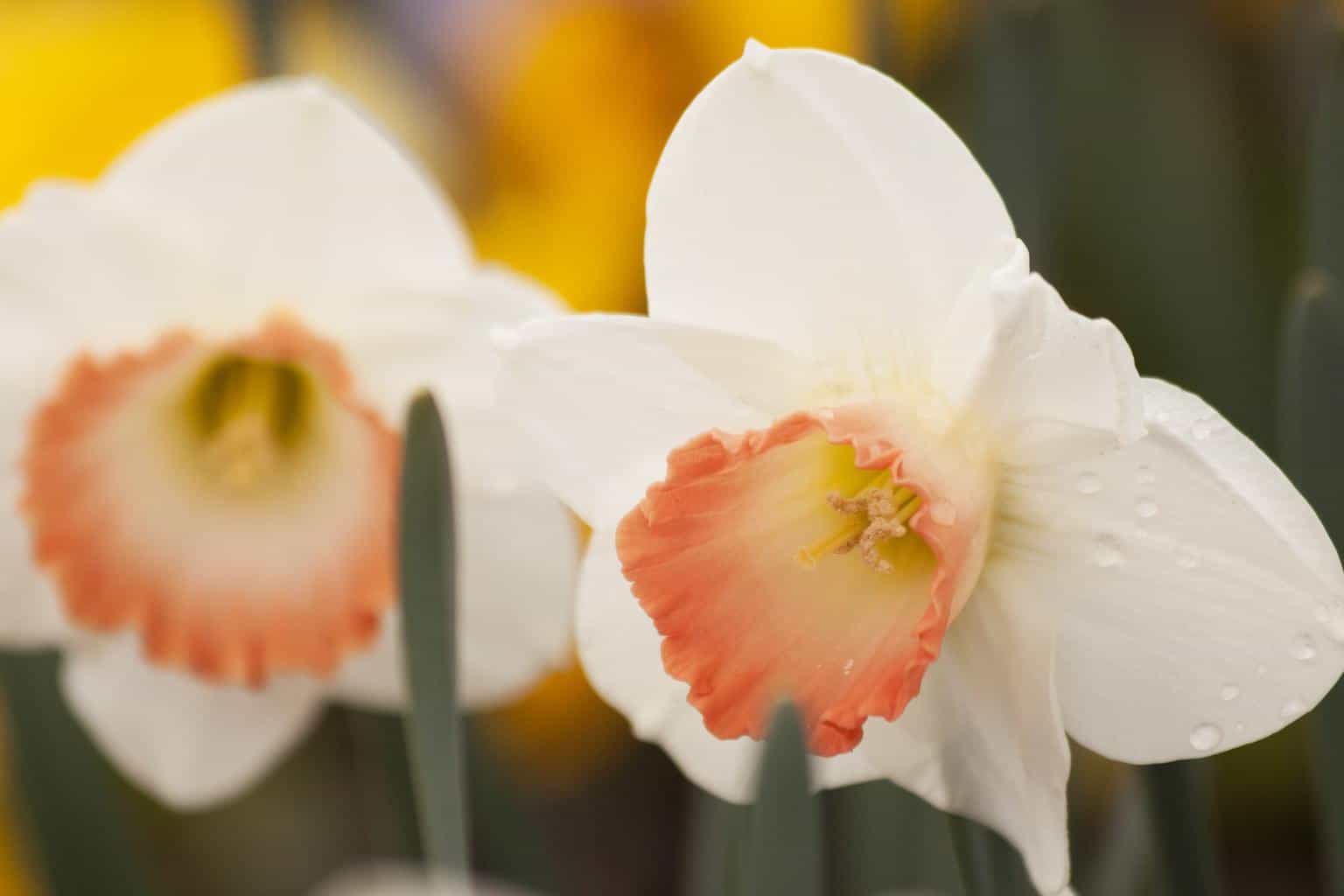 Daffodils in Religion
Daffodils in Religion
Daffodils in the Bible
Daffodils are probably the earliest flowers to appear in the bible. They symbolize rebirth, a process that many Christians believe occurs after death. Also, they bloom once Christ rose from the dead, serving as a reminder of his resurrection.
Daffodils in Judaism
Daffodils are also a symbol of the 1944 Warsaw Ghetto Uprising. The most famous Jewish insurrection during the I world war. On April 19th, people wear yellow paper daffodils to commemorate the event.
Daffodils in Islam
Early ancestors of the Daffodils or Narcissi were also mentioned by the Prophet Mohammed. He was said to have praised the flowers in his speech, encouraging Muslims to sell some of their bread to buy narcissi as they nourish the spirit while the bread sustains the body.
What we love from Amazon this week
Buy these wonderful flowers directly from Amazon:


